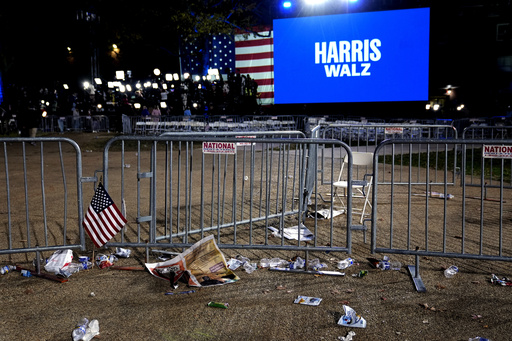Presidential elections in the United States serve as a pivotal moment for citizens to introspect and evaluate the nation’s core values, ambitions, and unresolved grievances. The outcome of the recent election revealed a significant shift in the political landscape, where many voters resonated with former President Donald Trump, awarding him an overwhelming victory in critical battleground states.
The reasons for his success are multifaceted, with a considerable number of Americans highlighting concerns about the state of democracy itself. Trump’s campaign was marked by a tone of negativity, branding the nation as “garbage” and leveling harsh insults at his opponent, which included deeming them “stupid” and “communist.” This candidacy reflected a deeply divided nation grappling with dissatisfaction, characterized by peculiar societal issues and a feeling of lost joy among Democratic voters. Alongside significant events such as two assassination attempts on Trump, the campaign was noted for its bizarre moments, including discussions about golfer Arnold Palmer’s private life.
Despite his triumph, a majority of voters expressed anxiety about the consequences of his presidency potentially steering the country toward authoritarianism, as revealed in the AP VoteCast survey. Alarmingly, around 10% of those concerned voters still supported him, while nearly 40% of his electorate indicated a desire for a radical transformation in governance.
Trump consistently portrayed a bleak image of the economy, disregarding statistics that indicated stability, and painted a dire picture of immigration and crime, skewing the reality of the situation. This rhetoric tapped into the sentiments of voters feeling neglected or victimized by the political system, leading to a decisive selection of a candidate who has openly discussed dismantling aspects of democracy itself.
Having previously attempted to undermine the peaceful transfer of power following his 2020 loss, Trump hinted at the possibility of “terminating” constitutional provisions, which stood in stark contrast to his oath to uphold the Constitution. His campaign was rife with promises that, if fulfilled, could significantly destabilize democratic practices and legal protections in the nation.
In the aftermath of his victory, Trump asserted his intent to govern by the motto “promises made, promises kept,” indicating a shift towards prioritizing personal vendettas and using presidential powers against political enemies. He suggested employing military force against what he termed “the enemy from within,” raising fears of a militarized response to civil dissent.
Driven by the consequences of his 2020 electoral defeat, Trump’s supporters have already begun modifying voting laws in several states based on unfounded claims of election fraud, creating a highly contentious environment for future electoral processes.
Moreover, Trump has set his sights on the bureaucracy he labels as the “deep state,” aiming to purge officials who previously resisted his agenda. He plans to facilitate the dismissal of federal employees by excluding many from civil service protections, which may weaken governmental enforcement capabilities and empower his administration to appoint more compliant officials.
However, Trump’s rise through democratic means serves as a paradox. Despite the apparent threat to democratic institutions, it remains fact that voters elected him, opting against his Democratic opponent, Kamala Harris. Initial assessments indicate the election was conducted fairly, akin to the previous cycle.
As political experts analyze Trump’s trajectory, the current environment underscores a profound theme of vengeance and a deviated path from traditional governance. Many anticipate that Trump will usher in two particularly tumultuous days as part of his agenda to reclaim power, though it’s debated whether or not he means these statements seriously.
Additionally, Trump secured stronger control over Congress, positioning himself to nominate loyalists for key government positions and exert greater influence over policy decisions than during his initial term, which faced considerable pushback from various administration leaders.
Scholars point to the implications of electing a divisive leader like Trump as a reflection on society’s trajectory, emphasizing that his second term is expected to be marked by continued controversy and divisive actions. Concerns regarding his potential disregard for international alliances and domestic rights loom large as he prepares to re-enter office.
Trump vehemently insists that he aims to restore, rather than dismantle, democracy, citing grievances against military leaders and executive actions taken by Democratic predecessors. This narrative, however, is intricately linked to a foundation built on false claims of a stolen election victory and the insurrection that followed.
Moving forward, potential constraints on Trump’s ambitions remain, including the Supreme Court’s interpretation of presidential authority. The outcome of these deliberations, alongside the composition of the House of Representatives, will significantly shape the political landscape.
This election result indicates a public that feels disillusioned by the current trajectory, as evidenced by strong support for Trump among younger demographics. Many young voters express a desire for radical change in governance, aligning with Trump’s rhetoric of upheaval.
As the nation watches keenly, it remains uncertain how Trump’s declared intentions will manifest in practice, alongside the guardrails of democracy that still exist to check his influence.
